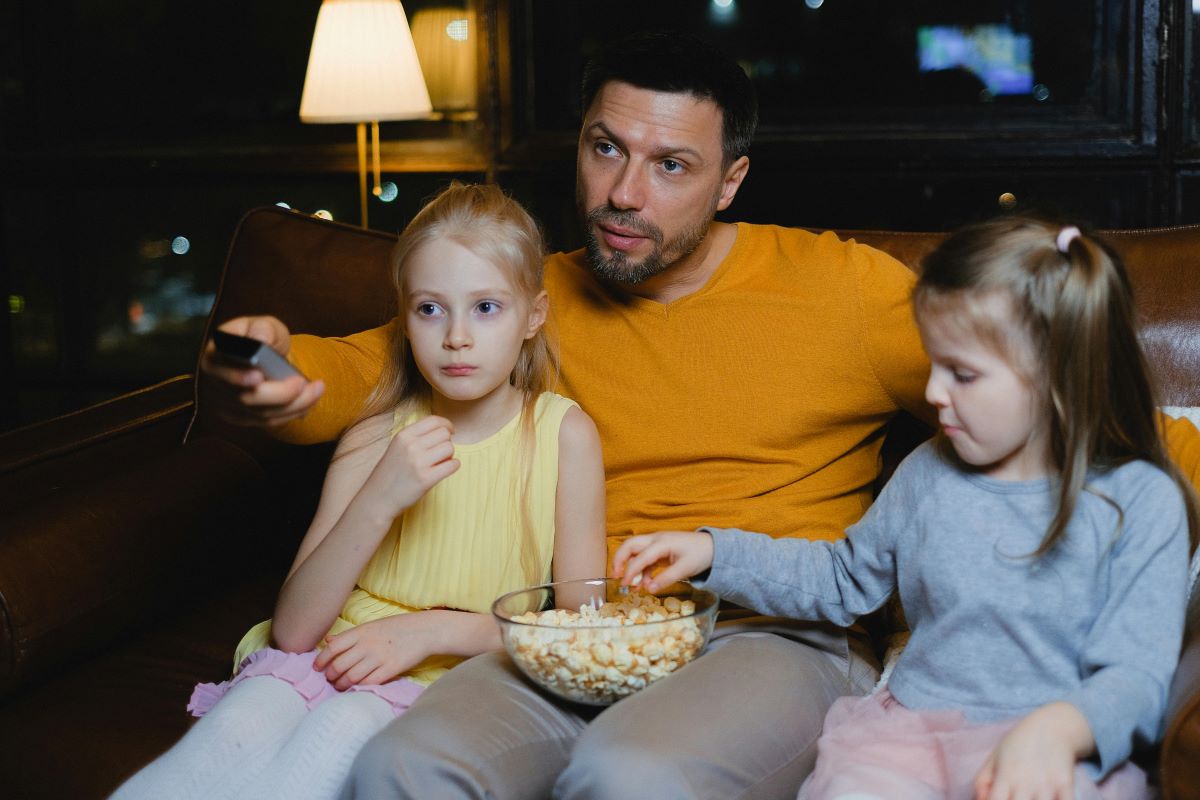Transform Your Family’s Screen Time: Our Digital Detox Secrets
Balancing screen time in a family is no easy feat, especially with multiple kids and a busy household. When I imagined parenting, I thought we’d be screen-free and always active. But reality hit differently. How do you manage to keep everyone happy and healthy while navigating the digital world? Here’s how we found balance and some practical tips for your family too.
1. Setting Boundaries Early

When our first child was born, managing screen time was relatively easy. We had clear boundaries, and it was simple to stick to them. However, when baby number two arrived before our eldest turned two, we had to rethink our strategies to accommodate the new dynamics.
2. Adapting to New Schedules

With a newborn and a toddler, our evenings became particularly challenging. My husband’s shift work meant I often handled bedtime alone, making it essential to establish a screen time routine that worked for everyone. We found that consistent schedules helped maintain a sense of order during those long, tiring nights.
3. Creating Engaging Offline Activities

To reduce reliance on screens, we introduced a variety of engaging offline activities. Arts and crafts, outdoor play, and story time became staples in our daily routine. These activities not only kept our kids entertained but also fostered creativity and physical activity.
4. Using Screen Time Wisely

We realized that not all screen time is created equal. Educational programs and interactive games became our go-to choices, ensuring that screen time was both fun and beneficial. By being selective about the content, we felt more comfortable with our children’s screen usage.
5. Balancing Personal Time

As a parent, it’s crucial to find moments for yourself amidst the chaos. Managing screen time effectively allowed me to carve out pockets of personal time for relaxation and self-care. This balance was essential for my well-being and, in turn, made me a better parent.
6. Involving the Kids in Decisions

Involving our kids in setting screen time rules helped them understand and respect the boundaries. We discussed why limits were important and encouraged them to participate in choosing activities. This collaborative approach made them more cooperative and aware of their screen usage.
7. Observing Your Own Screen Time

It’s easy to lose track of your own screen time, but kids notice everything. By limiting my screen time, I set a positive example. This also made me more present and engaged during family activities.
8. Prioritizing Family Meals

We made a point to have screen-free family meals. This time became sacred for conversation and bonding, reinforcing the importance of personal interactions over digital distractions.
9. Reading Together

Instead of defaulting to screens, we incorporated reading into our routine. I would read a book to my older child while nursing the baby, turning what could have been screen time into a shared, enriching experience.
10. Flexible Screen Time Policies

Flexibility is key. We adjusted our screen time policies as our kids grew, considering their needs and developmental stages. This approach kept the rules relevant and effective.
11. Setting Up Screen-Free Zones

Designating certain areas of the house as screen-free zones helped reduce the temptation of constant screen use. Bedrooms and dining areas were kept free from screens, promoting better sleep and more focused family time.
12. Encouraging Outdoor Play

We prioritized outdoor play whenever possible. Fresh air and physical activity became essential parts of our daily routine, offering a healthy alternative to screen time.
13. Monitoring Content

We closely monitored what our kids watched, ensuring it was age-appropriate and educational. This proactive approach gave us peace of mind about their screen time.
14. Scheduling Screen Time

Creating a screen time schedule helped us manage usage better. Allocating specific times for screens made it easier to balance with other activities and responsibilities.
15. Using Screens for Connection

We used screens to connect with family and friends, especially those far away. Video calls became a meaningful way to maintain relationships without over-relying on screens for entertainment.
16. Setting Parental Controls

Utilizing parental controls on devices helped us regulate screen time and content more effectively. These tools provided an extra layer of security and structure.
17. Encouraging Independent Play

Encouraging independent play reduced the need for screens as a constant source of entertainment. This also helped our children develop creativity and self-reliance.
18. Regularly Reviewing Screen Time Rules

We regularly reviewed and adjusted our screen time rules to ensure they met our family’s evolving needs. This ongoing assessment kept our approach fresh and effective.
Finding Balance Together

Balancing screen time is an ongoing journey that requires flexibility and creativity. By setting clear boundaries, creating engaging alternatives, and involving the whole family, we found a rhythm that works for us. Remember, it’s all about finding what suits your family’s unique needs.
Toxic Talk: 21 Phrases to Never Say to Your Kids

Are you worried about the impact of your words on your child’s well-being? Let’s tackle 21 phrases that might be causing more harm than you realize. Toxic Talk: 21 Phrases to Never Say to Your Kids
Breaking Ties: Recognizing When It’s Time to Go No-Contact with Parents

Deciding to go no-contact with a parent is a profound, often painful choice, but sometimes it’s necessary for personal well-being. Are you grappling with the decision to distance yourself from a toxic parental relationship? Breaking Ties: Recognizing When It’s Time to Go No-Contact with Parents
Stop the Stereotypes: 20 Gender-Based Comments Kids Don’t Need

It’s time to challenge traditional narratives that limit kids’ potential. Here are gender-specific phrases and ideas to avoid, fostering a supportive and open-minded environment for the next generation. Stop the Stereotypes: 20 Gender-Based Comments Kids Don’t Need
Reasons Your Adult Children May Be Pulling Away

Are you wondering why your grown-up kids seem to keep their distance? It might be a good time to look back and consider if some old parenting habits are to blame. Reasons Your Adult Children May Be Pulling Away
Want Happy Kids? Try These 15 Parenting Strategies

Parenting is both a privilege and a responsibility. Here are 15 research-backed strategies to help you raise happy children. Want Happy Kids? Try These 15 Parenting Strategies
The post Transform Your Family’s Screen Time: Our Digital Detox Secrets first appeared on Peachy Fours.
Featured Image Credit: Pexels / Anna Shvets.
For transparency, this content was partly developed with AI assistance and carefully curated by an experienced editor to be informative and ensure accuracy.







